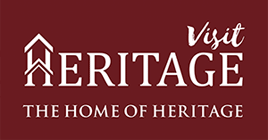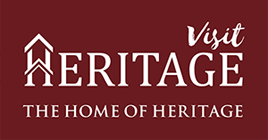To build your own Itinerary, click  to add an item to your Itinerary basket.
to add an item to your Itinerary basket.
Already saved an Itinerary?



You are here: UK History > Royal History > House of Normandy > Henry III | The King who gained, lost and gained t
Following on from the romanticised reign on Richard I and the less fondly remembered King John, we reach Henry III, aka Henry of Winchester.
Born: 1st October 1207, Winchester Castle, Hampshire, England
Died: 16th November 1272 (aged 65), Westminster London
Reign: 28th October 1216 – 16th November 1272
Parents: John, King of England and Isabella Countess of Angouleme
Predecessor: John (father)
Successor: Edward I (son)
Spouse: Eleanor of Provence (Consort)
Children: Edward I, Margaret Queen of Scots, Beatrice Countess of Richmond, Edmund Crouchback, Katherine of England
Royal House: Plantagenet / Norman
The third of Britain’s Henrys had a very long reign,...Read More
Following on from the romanticised reign on Richard I and the less fondly remembered King John, we reach Henry III, aka Henry of Winchester.
Born: 1st October 1207, Winchester Castle, Hampshire, England
Died: 16th November 1272 (aged 65), Westminster London
Reign: 28th October 1216 – 16th November 1272
Parents: John, King of England and Isabella Countess of Angouleme
Predecessor: John (father)
Successor: Edward I (son)
Spouse: Eleanor of Provence (Consort)
Children: Edward I, Margaret Queen of Scots, Beatrice Countess of Richmond, Edmund Crouchback, Katherine of England
Royal House: Plantagenet / Norman
The third of Britain’s Henrys had a very long reign, coming to the throne at the age of nine and ruling for more than fifty years. He is in fact one of England’s longest serving monarchs and held the title of longest reign until he was pipped by George III decades later. His reign, though long, was hampered with unrest and pressures from abroad. In the spirit of the other Plantagenet kings, Henry had an on again/ off again relationship with the king of France and inherited a war against his own barons when his father, King John, died.
.jpg)
Image: Henry III
Henry III was the oldest son of King John and his second wife, Isobella of Angouleme. He was born at Winchester Castle on 1st October 1207 and little is known about his early years. His father died in 1216 in the middle of the First Baron’s War, leaving a nine year old Henry as King. Before passing, King John created a council of 13 executors to advise and assist his son until he came of age. This council included William Marshal, one of the most well known knights at the time who took a direct approach to ending the First Baron’s War. Sir William defeated the rebels at the Battle of Lincoln and helped introduce the Treaty of Lambeth in September 1217, which ended the conflict. The treaty included parts of the Great Charter, also known as the Magna Carta, left over from King John’s reign. Henry reissued it and it is this version that we know today, though it couldn’t receive a royal seal until Henry came of age in 1227. The Magna Carta was reissued a second time in 1225 after a threat by King Louis VIII, over time it would become more and more engrained in English government and politics. The charter limited the authority of the crown and many of Henry’s barons refused to support him unless he promised to introduce and stick to it. This was the first of many challenges Henry would endure from his own nobility.
As if becoming king at the age of nine in the middle of a war wasn’t enough, on his coronation on 28th October 1216 at Gloucester Cathedral, the young Henry was also named the Lord of Ireland and the Duke of Aquitaine. In this first coronation, Henry had to be crowned using one of his mother’s corollas as the crown jewels had been lost, possibly in the Wash, during one of the battles in the First Baron’s War.
He was coronated a second time in 1220 at Westminster Abbey with new royal regalia that he had had commissioned.
Henry’s reign would continue in much the same way as it had started. There were issues between the crown and the barons from start to finish. After quashing the barons shortly after his ascension, Henry decided he wanted to reclaim what he believed to be his ancestral lands in France and restore the rights that were lost by his father. This would begin a series of unsuccessful skirmishes and invasions, one of the reasons why he would regularly run out of money. Many historians believe that his poor decision making often led to the royal coffers running on empty, however it is thought that he was a pious, charitable and generous king. He rebuilt much of London and the many royal palaces as well as Westminster Abbey. He was also a strong supporter of education, endorsing both Oxford and Cambridge Universities which were in their infancy at the time.
Perhaps because of the issues he had with the barons, Henry was a much more present King than his predecessors, choosing to run the kingdom personally rather than via ministers and spent more time in England than any of the other Norman kings. This became especially important to him after a revolt led by Richard Marshal, the son of his most trusted advisor. The church intervened and peace was returned, but this didn’t mean an end to the strife with the barons.
Henry’s money issues were certainly exacerbated by his own policies, especially towards his Jewish subjects. Though perhaps his commitment to the Pope was to blame for one of the most well known aspects of his reign: The Statute of Jewry which was introduced in 1253. In the early part of his reign, the Jewish community in England flourished. They were considered to be property of the crown and had been a source of loans in exchange for royal protection as traditionally, members of Christian religions were not allowed to work in finance. The Pope disliked this and made his feelings well known and after France introduced similar policies curbing the freedoms of Jewish people, Henry followed suit. The introduction of this new policy saw many Jewish leaders were imprisoned and others encouraged to convert. The statute attempted to stop the construction of synagogues and to enforce the wearing of badges so that Jewish people could be more easily identified. This led to a lot of anti-Jewish sentiment being directly endorsed by the crown, the ramifications of which is still felt to this day.
In fact, Henry’s dedication to the Pope was so great, he offered money he didn’t have to help finance Papal Wars in Sicily. Henry hoped that by offering the funding, his youngest son, Edmund, would be crowned as Sicily’s king, something that never came to fruition.
One thing that historians do agree on is that family meant more to Henry than money or keeping his subjects happy. He married Eleanor of Provence when he was 28 and she was just 12. It was believed to be a very successful and happy marriage with historians claiming that during their 36 year relationship, Henry took no mistresses and had no illegitimate children, something very rare among the monarchy. The pair had five children, Edward, Margaret, Beatrice, Edmund and Katherine. Katherine died young, possibly as a result of a degenerative disorder, something that hit Henry hard. In fact, he and Eleanor spent a lot of time with their children and had them live with them in Windsor Castle. The only time the family was apart was when Henry would go abroad for crusade or to attend to his territories in France, during this time, Eleanor ruled as regent and had a prominent role with influence in political affairs and financial independence, something unheard of for women of the time.
In 1258, Henry suffered another rebellion at the hands of his barons. The barons demanded reform and tried to overthrow the monarchy, forming their own government and abandoning the absolutism of the monarchy. A Privy Council was introduced to discuss and decide policy which would then be implemented with the monarch’s approval. Only, Henry had no choice in this matter and was forced to agree. This rebellion led to the Second Baronial War, this time led by Simon de Montfort.
At the Battle of Lewes in 1264, Henry’s forces were defeated and he was taken prisoner. During his imprisonment, Henry was forced to sign the Mise of Lewes, which effectively transferred his power to de Montfort, making him the de facto King of England. Henry’s oldest son, Edward escaped, regrouped and defeated de Montford the following year, freeing his father.
Henry returned to the throne and altered his policies renewing his commitments to the Magna Carta and making new promises to maintain baronial support. He eventually passed away in 1272, leaving a difficult political and social landscape that was very different to the one that John presided over.
In the last few weeks of his life, his son Edward had gone on crusade with Louis of France and refused to return to England, even after Henry wrote to him about his failing health. Henry died on 16th November 1272 in Westminster with his wife at his side. Edward was named his heir but took his time coming home, eventually returning in August 1274. Adhering to his final wishes, Henry was buried in Westminster Abbey in front of the church’s high altar, the former resting place of Edward the Confessor who Henry had admired. It is believed that he and Eleanor had chosen the name of their first son because of this. A few years into his reign, King Edward commissioned a grander tomb for his father and Henry was moved to his current location within the abbey grounds. The effigy on top of the tomb was designed and forged within the grounds but is not believed to be a realistic portrayal of him. Historians believe him to have had a strong build and drooping eyes, something that doesn’t feature on his tomb. Since being interred, there were a number of miracle reported at Henry’s final resting place. Some claim that his body was in perfect condition after he was exhumed to be moved and a shrine was created at his grave side. Though despite the hopes of Eleanor, he was never canonised.
While Henry’s body remained at Westminster, his heart was moved and reburied at Fontevraud Abbey alongside his Angevin ancestors.
Blackfriars, Kent
This site features the remains of a 13th century friary on the banks of the River Stour, it was founded by Dominican monks and was one of the friaries granted by Henry.
Chawton House Library, Hampshire
Also known for being the former home of Jane Austen’s brother, when the house belonged to the de Port’s it was frequently visited by Henry and his family.
Christ Church, Greyfriars, London
The heart of his wife and his daughter are both buried here.
Ludgershall Castle, Wiltshire
Henry transformed the castle into a royal residence and hunting lodge, though it is now in ruins.
Maughan Library, Chancery Lane, London
The site was home to the House for Converts, for Jews who converted to Christianity. It was founded by Henry.
Queen Eleanor’s Garden, Hampshire
Named for Henry’s wife and daughter in law.
Tower of London, London
Henry made the Tower his home in 1240, he also kept an elephant he was gifted at the menagerie here.
Westminster Abbey, London
There is a statue of Henry on the sanctuary next to Westminster Abbey.
Winchester Castle, Hampshire
Read Less© Visit Heritage 2025. All Rights Reserved


We are now retrieving your search results. Please wait, this may take up to 30 seconds


![]()
Supporting the Destination
![]()
Quality Guarantee
We are now retrieving real time availability results. Please wait, this may take up to 30 seconds.

.png)


